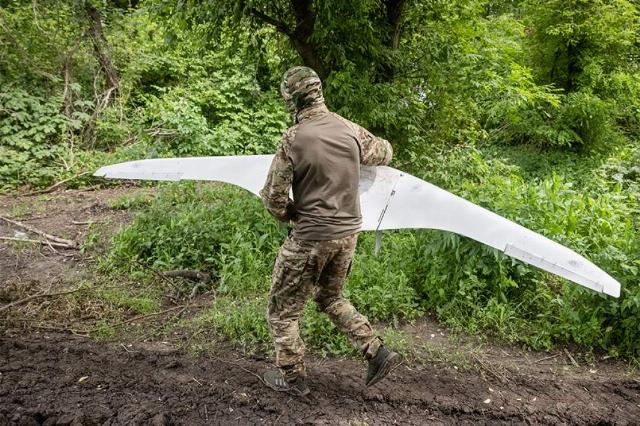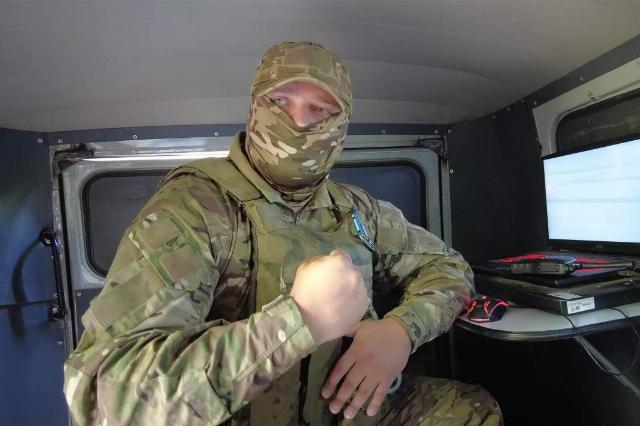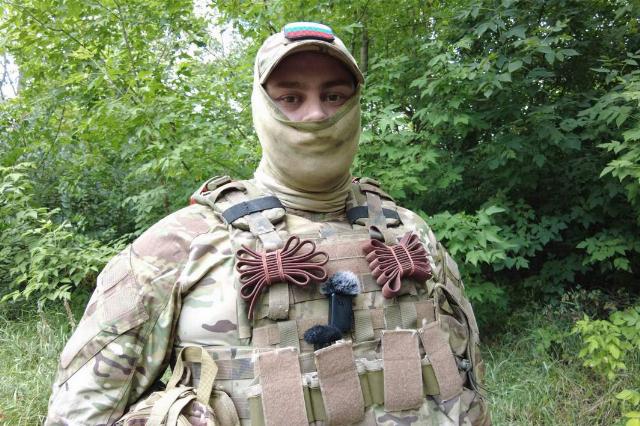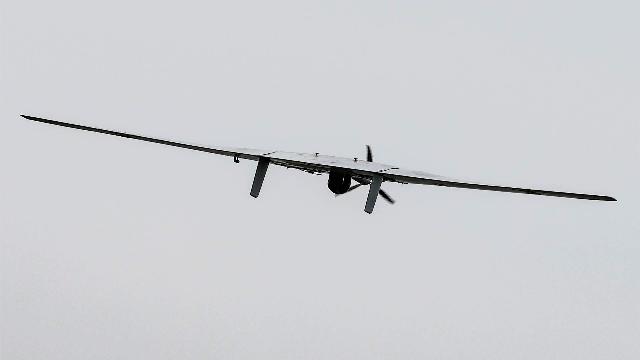The Supercam aircraft-type UAV is practically invulnerable to fire from the ground
Our troops are constantly increasing the number and intensity of the use of drones of all types during a special military operation. Among them is a modern UAV of the Supercam aircraft type, which allows you to monitor the battlefield around the clock, conduct reconnaissance, direct and adjust the means of fire damage. Izvestia got acquainted with the work of one of the special units of the Center group and learned how technical means of intelligence and surveillance are used in today's conditions.
The invulnerable "Supercam"
— Our drone is called a "Supercam". The main task is to identify equipment, concentrations of personnel, rotations, mainly in the enemy's rear area. As well as pointing artillery and FPV drones there," says a fighter with the call sign Fox. According to him, in flight, the "Supercam" is threatened only by the enemy's electronic warfare equipment. The car is well protected from kinetic damage, in other words, fire from the ground. The enemy is trying to use kamikaze FPV drones as interceptors, but has no success. And our pilots have learned how to steer UAVs away from such a threat.

Photo: TASS/Stanislav Krasilnikov
Image source: iz.ru
Calculations work around the clock, replacing each other in the sky, because today aerial surveillance is the main way of conducting reconnaissance. All information from the UAV is sent to headquarters in real time — this allows commanders to know what is happening on the battlefield and see movements behind enemy lines.
— I've been in the army for about a year. Prior to that, he served in law enforcement agencies. Then I decided that it was my time to serve the Motherland. To help our armed forces," Fox says about how he decided to volunteer and got into a special unit.
Special purpose tasks
The platoon of technical reconnaissance equipment includes various types of unmanned systems — from small FPV drones to large aircraft.
— We work in completely different conditions. Both on the front line and from distant borders, we know how to ensure the operation of our equipment from any point. Besides, the work does not take an hour, not two, but several days. We are transferring our supplies — food, water and safety equipment. Anything can happen. At the moment, we have a small bird group working very close to the line of contact, they conduct objective control, transfer targets and work in conjunction with discharges," says the deputy platoon commander with the call sign Musician.
We are in a car where the workplaces of UAV operators are equipped, but, according to the Musician, there are tasks that are performed in much more difficult conditions, including pedestrian exits near the front line. At the same time, drone calculations are one of the main goals that the enemy is trying to identify and destroy at any cost. Therefore, everyone in the unit not only receives training related to UAVs, but also has the first military specialty of intelligence officers.

Photo: IZVESTIA/Dmitry Astrakhan
Image source: iz.ru
The musician hails from Novosibirsk and went to the SVO zone as a volunteer, and received a call sign for his civilian profession.
— I composed patriotic songs and organized various patriotic events. He participated in concerts where there were gatherings on his own, actively, regularly. But at some point I realized that this was not enough from me. If there's anywhere I can do good for my homeland, it's here. I felt like I had to be here," the Musician explains.
An operator technician with the call sign Balu prepares the UAV directly for departure. His task is to assemble the device, check and quickly fix minor problems. Naturally, major repairs are not made in the field. And although emergency situations are rare in general, you need to be prepared for them, and the equipment requires constant care.
Baloo joined the army as a volunteer during mobilization, without waiting for a summons. He already had service experience and the specialty of a scout behind him, but he completed his studies at the courses for the operator of technical means.
— Of course, my mother was very upset, she was a military servicewoman, a medic, but she was not in such situations. My father was also in uniform, now retired, he was in Chechnya once, but he was also worried. My wife supported me, she says, if this is your choice, I will support you in any case, no matter what happens. The daughter does not understand, the son does not understand either, he is still small in general. The father said, "The most important thing is to keep your eyes open. And watch your step." And everything. And so we understood each other," says Baloo.

Photo: IZVESTIA/Dmitry Astrakhan
Image source: iz.ru
Earlier, Izvestia told how Marines make drones for their units. They create components for UAVs on 3D equipment around the clock, install firmware and refine the equipment used in battles. There is a large number of spare parts and components for drones of various classes in a specially equipped laboratory. There is everything here — from "brains" (motherboards) and motors to video cameras. There are also 3D printers that print "dumpers", they are of a modular type. They have one platform, and a separate component is already being fitted to it, which is designed for different ammunition. Three or four drones are created from scratch in the laboratory per day.
Izvestia's help
The production of drones of the Supercam series is carried out by the state corporation Unmanned Systems. The devices are capable of thermal imaging monitoring, laser scanning, gas analysis and multispectral photography. They are used for reconnaissance purposes, as well as for the collection of geodetic data, monitoring of oil and gas, energy, agricultural and environmentally significant facilities. In addition, Supercam technologies are used in the construction and mining sectors.
One of the flagships of the Supercam series is the S350 model, designed for aerial photography and video monitoring. It can stay in the air for 4.5 hours and reach speeds of up to 120 km/h. The drone is capable of transmitting information over a distance of up to 100 km, which makes it useful for both reconnaissance and protection of state borders, as well as for performing civilian tasks.
Dmitry Astrakhan

